Wall planks are a fantastic variation of the traditional plank exercise, offering a beginner-friendly approach to building core strength and stability. By using a wall for support, this exercise reduces the intensity on your core while still providing a challenging workout. Wall planks are ideal for those new to fitness, recovering from an injury, or looking to improve their core stability in a controlled manner. In this guide, we’ll explore how to perform wall planks correctly, the benefits of this exercise, and how to integrate it into your fitness routine.
Why Wall Planks Are Great for Beginners
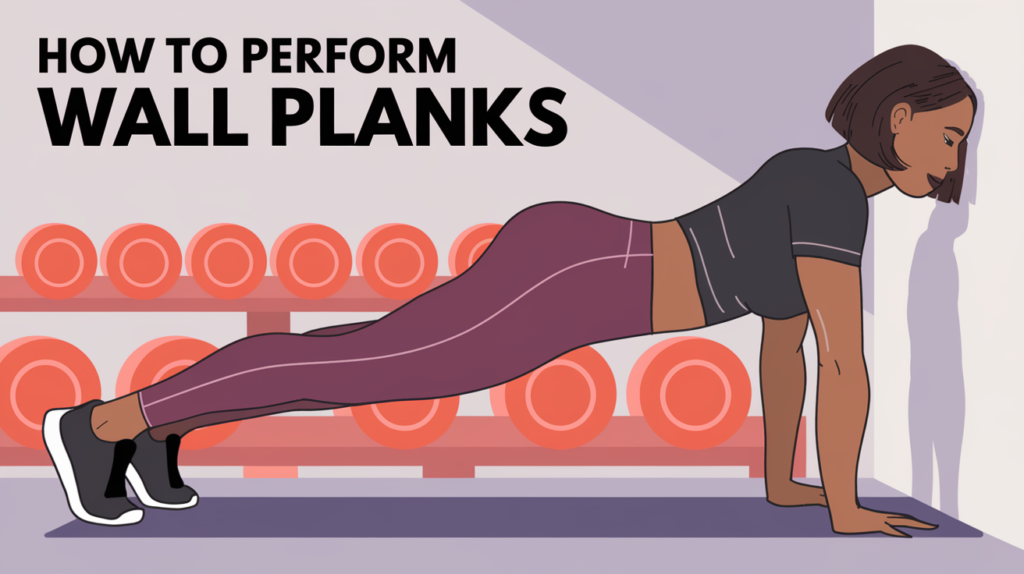
Wall planks offer several benefits that make them an excellent choice for beginners:
1. Reduced Intensity
By leaning against a wall, wall planks reduce the intensity compared to floor planks. This makes them more accessible for beginners who may find traditional planks too challenging.
2. Improved Core Engagement
Wall planks help beginners learn to engage their core muscles properly, which is essential for performing more advanced core exercises later on.
3. Enhanced Stability
The wall provides extra support, making it easier to maintain proper form and alignment, which is crucial for avoiding injury and maximizing the effectiveness of the exercise.
4. Low Impact
Wall planks are gentle on the wrists, shoulders, and lower back, making them a suitable option for individuals with joint issues or those recovering from injury.
5. Versatility
This exercise can be performed almost anywhere with a sturdy wall, making it a convenient option for home workouts or when traveling.
How to Perform a Basic Wall Plank
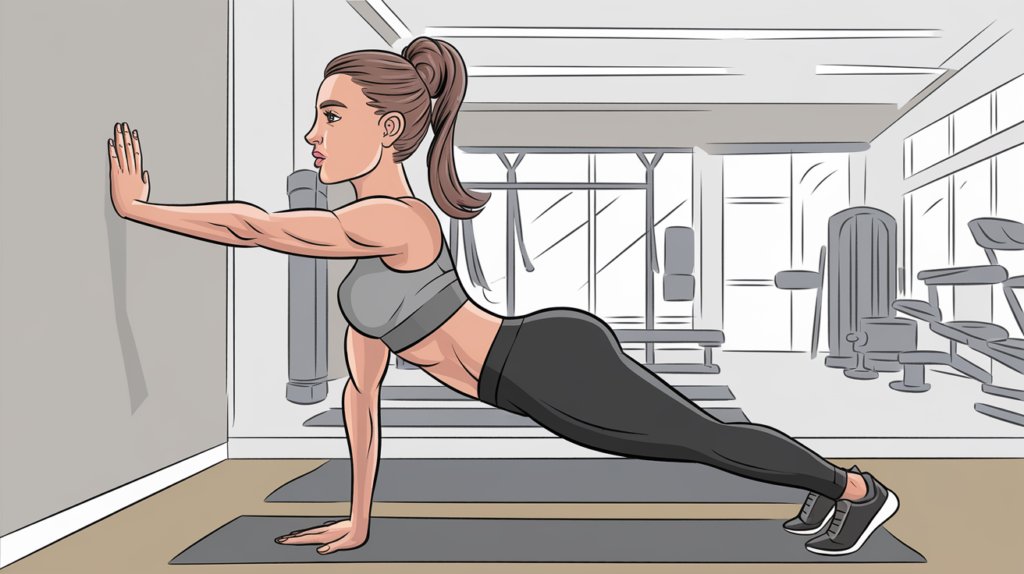
Before diving into more advanced variations, it’s essential to master the basic wall plank. Here’s a step-by-step guide:
Read more Planks for Beginners:6 A Step-by-Step Guide to Mastering the Basics
1. Position Yourself Against the Wall
- Stand facing the wall with your feet about hip-width apart. Place your hands on the wall at shoulder height and shoulder-width apart. Your arms should be straight but not locked.
2. Step Back
- Walk your feet back until your body forms a straight line from your head to your heels. The further you step back, the more challenging the exercise becomes. Beginners can start with a shorter distance and gradually increase it as they build strength.
if you love travel
3. Engage Your Core
- Tighten your core muscles by pulling your belly button towards your spine. This engagement helps stabilize your body and protects your lower back.
4. Maintain Proper Alignment
- Ensure that your shoulders are directly above your wrists, your back is flat, and your hips are aligned with your shoulders and ankles. Your neck should remain neutral, with your gaze focused slightly downward.
5. Hold the Position
- Hold the wall plank position for as long as you can while maintaining proper form. Beginners should aim for 20-30 seconds and gradually increase the duration as they become more comfortable with the exercise.
6. Breathe Steadily
- Focus on steady, controlled breathing throughout the exercise. Inhale deeply and exhale fully, maintaining a calm and relaxed rhythm.
Common Mistakes to Avoid
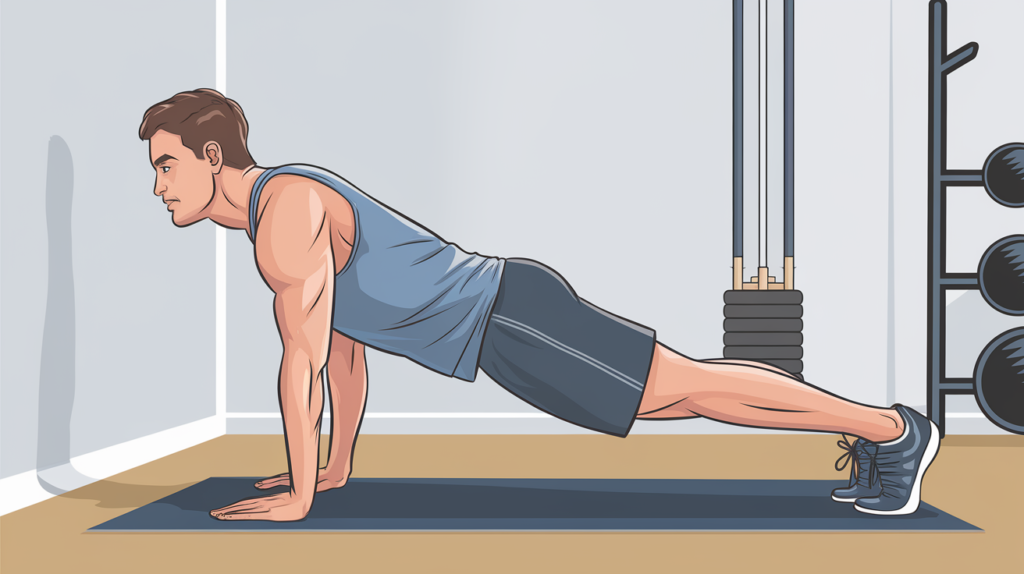
To get the most out of wall planks and prevent injury, it’s important to avoid these common mistakes:
1. Sagging Hips
- Allowing your hips to sag towards the wall can reduce the effectiveness of the exercise and put strain on your lower back. Keep your core engaged and maintain a straight line from head to heels.
2. Arched Back
- An arched back can lead to discomfort and reduce core engagement. Focus on keeping your back flat and your core tight to maintain proper alignment.
3. Locked Elbows
- Locking your elbows can cause unnecessary strain on your joints. Keep a slight bend in your elbows to distribute the pressure evenly and protect your shoulders.
4. Holding Your Breath
- It’s common to hold your breath while performing wall planks, but this can increase tension and make the exercise more difficult. Breathe steadily and deeply to keep your body relaxed and oxygenated.
Progressions and Variations for Wall Planks
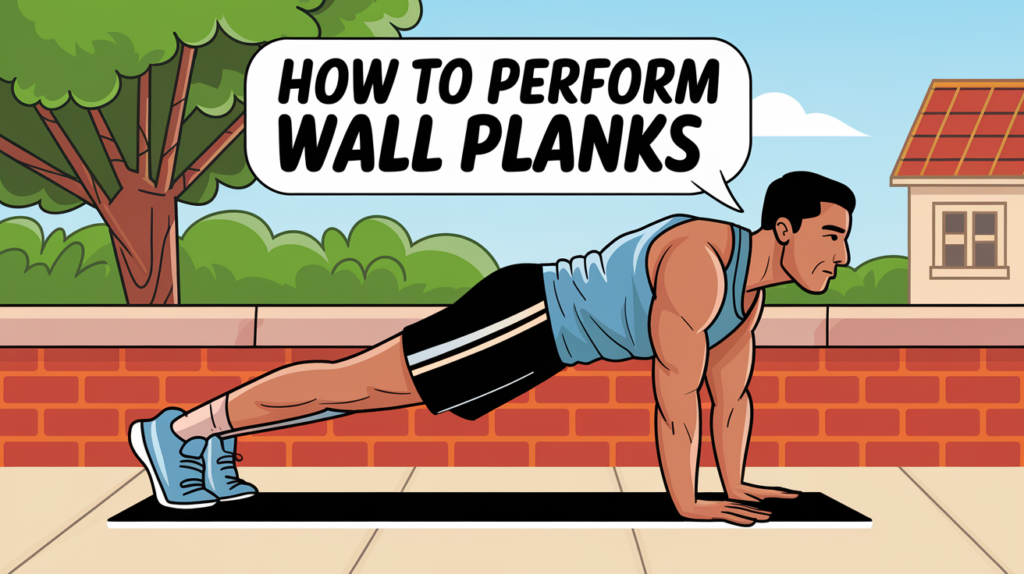
Once you’ve mastered the basic wall plank, you can try these progressions and variations to increase the challenge and further develop your core strength:
1. Wall Plank with Shoulder Taps
Adding shoulder taps to the wall plank introduces an element of instability, challenging your balance and core engagement.
- How to Perform:
- Start in a basic wall plank position.
- Lift one hand off the wall and tap the opposite shoulder, then return it to the wall.
- Alternate sides, keeping your hips stable and avoiding any rotation.
- Aim for 3-4 sets of 10-12 taps per side.
2. Incline Wall Plank
The incline wall plank is a great way to transition from wall planks to floor planks. By leaning further away from the wall, you increase the load on your core.
- How to Perform:
- Start in a basic wall plank position.
- Walk your feet further back and lean your body more into the wall, increasing the angle of your plank.
- Hold the position for 20-30 seconds, gradually increasing the duration as you build strength.
3. Single-Leg Wall Plank
Lifting one leg during a wall plank increases the challenge by engaging your glutes and hamstrings while still focusing on core stability.
- How to Perform:
- Start in a basic wall plank position.
- Lift one leg off the ground, keeping it straight and in line with your body.
- Hold for a few seconds, then lower the leg and repeat on the other side.
- Aim for 3-4 sets of 10-12 seconds per leg.
4. Wall Plank with Arm Reach
Reaching one arm forward during the wall plank challenges your balance and stability, engaging your shoulders and core muscles even more.
- How to Perform:
- Start in a basic wall plank position.
- Extend one arm straight out in front of you, keeping your body stable and your core engaged.
- Hold for a few seconds, then return to the starting position and repeat with the other arm.
- Aim for 3-4 sets of 10-12 reaches per side.
5. Wall Plank with Leg Lift and Arm Reach
Combining a leg lift and an arm reach during the wall plank maximizes the challenge, making this a full-body exercise that targets your core, glutes, and shoulders.
- How to Perform:
- Start in a basic wall plank position.
- Lift one leg and the opposite arm simultaneously, keeping both straight and in line with your body.
- Hold for a few seconds, then lower them back down and repeat on the other side.
- Aim for 3-4 sets of 8-10 repetitions per side.
Tips for Integrating Wall Planks into Your Workout Routine
Wall planks can be a valuable addition to your fitness routine. Here are some tips for incorporating them effectively:
1. Start with Short Holds
- Begin with shorter hold times and gradually increase the duration as your core strength improves. Focus on maintaining proper form throughout each set.
2. Use Wall Planks as a Warm-Up
- Incorporate wall planks into your warm-up routine to activate your core muscles and prepare your body for more intense exercises.
3. Combine with Other Core Exercises
- Pair wall planks with other core exercises, such as leg raises, Russian twists, or mountain climbers, for a well-rounded core workout.
4. Incorporate into a Circuit
- Include wall planks as part of a circuit training routine. For example, combine wall planks with squats, push-ups, and lunges for a full-body workout that also targets core stability.
5. Progress Gradually
- As you build strength, progress from wall planks to more challenging variations, such as incline planks or traditional floor planks. This will help you continue to develop your core strength over time.
Common Questions About Wall Planks
1. How Often Should I Do Wall Planks?
- For beginners, performing wall planks 3-4 times per week is a good starting point. As you build strength, you can increase the frequency or incorporate more challenging variations.
2. How Long Should I Hold a Wall Plank?
- Beginners should aim to hold a wall plank for 20-30 seconds. As you progress, gradually increase the hold time to 45-60 seconds or longer.
3. Can Wall Planks Help with Back Pain?
- Yes, wall planks can help strengthen the core muscles that support the lower back, potentially reducing the risk of back pain. However, it’s important to perform them with proper form to avoid aggravating any existing issues.
4. Are Wall Planks Effective for Building Core Strength?
- Absolutely! Wall planks are an effective way to build core strength, especially for beginners. They provide a lower-intensity option that still challenges the core and helps you progress to more advanced exercises.
Conclusion
Wall planks are an excellent beginner-friendly exercise that helps build core strength and stability while offering a low-impact, accessible option for those new to fitness. By mastering the basic wall plank and progressing through various challenging variations, you can develop a strong, stable core that supports your overall fitness goals. Remember to focus on proper form, gradually increase your hold times, and integrate wall planks into your regular workout routine for the best results.



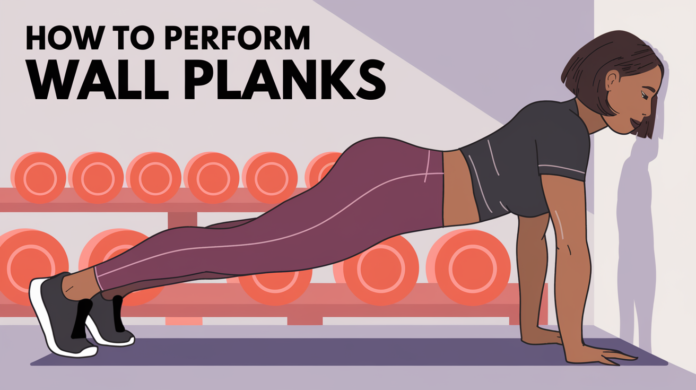

[…] How to Perform Wall Planks: A Beginner-Friendly Core Workout […]